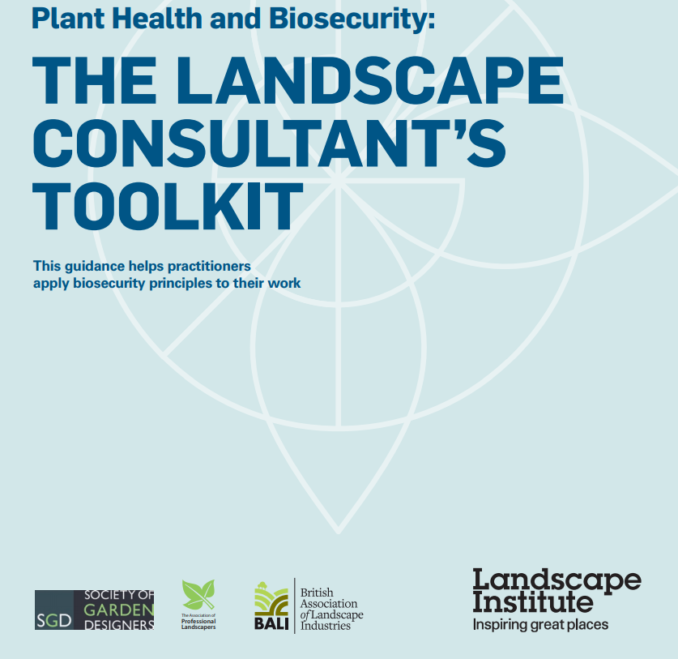
Plant health and biosecurity issues present a major threat to ecosystem resilience. Landscape consultants work in high-risk environments, where they might inadvertently introduce or spread new pests and diseases into the landscape at any stage of a project. And with the uncertainty in the UK’s trading future with the EU – and beyond – it is more crucial than ever that those in the landscape sector implement biosecurity principles at every stage of their work.
The Landscape Institute (LI) has published a new plant health and biosecurity toolkit for landscape consultants to prioritise action against pests and diseases that threaten our crops, trees, gardens and landscapes in every part of the plant supply chain. This new resource is launched in partnership with the Society of Garden Designers (SGD), the British Association of Landscape Industries (BALI) and the Association of Professional Landscapers (APL) to embed biosecuritybest practice in every stage of a project, from landscape assessment through to management.
Plant pests and diseases are a normal characteristic of the environment and usually exist in equilibrium with their hosts, which naturally limit their spread. At a landscape scale, some pests and diseases can be even be beneficial in terms of habitat creation and the carbon cycle. However, we are still living with the consequences of Dutch elm disease some thirty years on, so it is worrying to see a recent spate of ‘exotic’ pests and diseases being found in areas where they have few natural control measures or predators. Examples include ash dieback, oak processionary moth, sweet chestnut blight and Massaria disease of plane trees. These new pests and diseases have economic, social and environmental impacts and the role of landscape consultants is critical in managing this problem, exacerbated by the greater globalisation of trade and the effects of climate change.
From large plants that are imported with larger soil volumes to managing work sites where disease can spread in other ways – including the use of soil and growing mediums, wood, packaging materials, vehicles, machinery and equipment – landscape consultants now have the opportunity to offer a solution to this industry-wide problem.
Landscape architects, garden designers and contractors all specify plants and materials in their work. This biosecuritytoolkit defines the processes to be adopted, while promoting best practice across the industry and setting out clear guidance for each stage of a project.
One important practical feature of the toolkit is the species selection guide – an A to Z list of the 90 most common genera encountered by landscape professionals that sets out the risks from pests and diseases and the actions to take to mitigate them. Although Defra’s UK Plant Health Risk Register is a valuable resource, this new toolkit breaks down the different risks and makes the information more accessible and digestible to a wider audience of practitioners who may know a lot about plants, but not necessarily as much about pests. When landscape professionals develop their concepts and choose their plants, it is vital that they understand the importance of species selection and their responsibility to use healthy and risk-free plants.
Adam White, President of the Landscape Institute said: “Many associations individually provide guidance on biosecurity, but their advice largely focuses on foresters, nurseries and contractors.
“As a professional body, we are keen to see better skills and standards developed. This toolkit should align well with the Plant Health Management Standard which focuses on risk throughout the ornamental and amenity plant supply chain.
“It is really important at a time when our climates are changing that designers really think about the plants, where they are coming from and how we can protect them from any further disease. It is fantastic to be launching this guide as part of a wider industry partnership. Introducing this toolkit to delegates at our biosecurity CPD day at Kew Gardens on Friday 14 June will be the first step in encouraging members to adapt their thinking about biosecurity at every stage of their work.”
To download the toolkit, please click here.
Image Courtesy of Landscape Institute.
